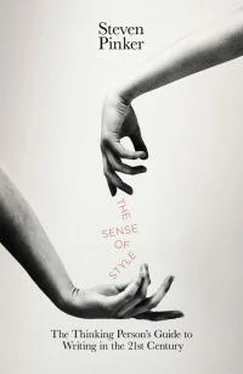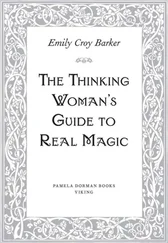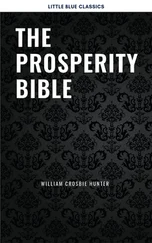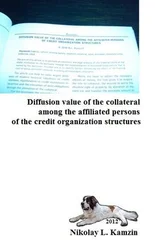The experimenters found,
though
, that the infants did
not
respond as predicted to the appearance of the ball, but
instead
did
not
look significantly longer than they did when the objects were
not
swapped.
The experimenters predicted that the infants would look longer at the ball if it had been swapped with another object than if it had been there all along. In fact, the infants looked at the balls the same amount of time in each case.
The three-judge panel issued a ruling
lifting
the
stay
on a district judge’s injunction to
not
enforce the
ban
on same-sex marriages.
The three-judge panel issued a ruling that allows same-sex marriages to take place. There had been a ban on such marriages, and a district judge had issued an injunction not to enforce it, but a stay had been placed on that injunction. Today the panel lifted the stay.
As the Duchess in Alice in Wonderland explained, “The moral of that is—‘Be what you would seem to be’—or, if you’d like it put more simply—‘Never imagine yourself not to be otherwise than what it might appear to others that what you were or might have been was not otherwise than what you had been would have appeared to them to be otherwise.’”
It’s not just readers who are confused by negations. Writers themselves can lose track and put too many of them into a word or sentence, making it mean the opposite of what they intended. The linguist Mark Liberman calls them misnegations, and points out that “they’re easy to fail to miss”: 22
After a couple of days in Surry County, I found myself no less closer to unraveling the riddle.
No head injury is too trivial to ignore.
It is difficult to underestimate Paul Fussell’s influence.
Patty looked for an extension cord from one of the many still unpacked boxes.
You’ll have to unpeel those shrimp yourself.
Can you help me unloosen this lid?
The difficulty posed by negations has long been noted in style manuals. Dave Barry’s “Ask Mr. Language Person” satirized their typical advisory:
WRITING TIP FOR PROFESSIONALS: To make your writing more appealing to the reader, avoid “writing negatively.” Use positive expressions instead.
WRONG: “Do not use this appliance in the bathtub.”
RIGHT: “Go ahead and use this appliance in the bathtub.”
The satire makes a serious point. Like most advice on style that is couched as a commandment rather than an explanation, the flat directive to avoid negations is almost useless. As Mr. Language Person implies, sometimes a writer really does need to express a negation. How long could you go in a day without using the words no and not ? The sarcastic question “What part of ‘NO’ don’t you understand?” reminds us that negation is perfectly easy for people to handle in everyday speech. Why should it be so hard in writing?
The answer is that negation is easy to understand when the proposition being negated is plausible or tempting. 23Compare the negations in these two columns:
A whale is not a fish.
A herring is not a mammal.
Barack Obama is not a Muslim.
Hillary Clinton is not a Muslim.
Vladimir Nabokov never won a Nobel Prize.
Vladimir Nabokov never won an Oscar.
The sentences in the left-hand column all deny a proposition that it would be reasonable for readers to entertain. A whale looks like a big fish; Obama has been the subject of rumors about his religion; Nabokov was denied the Nobel Prize in Literature that many critics thought he deserved. Experiments have shown that statements like the ones in the left column, which deny a plausible belief, are easier to understand than statements in the right column, which deny an implausible belief. The first reaction to reading a sentence on the right is, “Who would ever have thought it was?” (Or she was? Or he did?) Negative sentences are easy when the reader already has an affirmative in mind or can create one on short notice; all he has to do is pin a “false” tag onto it. But concocting a statement that you have trouble believing in the first place (such as “A herring is a mammal”), and then negating it, requires two bouts of cognitive heavy lifting rather than one.
And now we see why the opening to A History of Warfare is so puzzling. Keegan began by denying a proposition that was not particularly compelling to the reader in the first place (and which became no more compelling upon further explanation). The same is true for the two baffling sentences I used on page 140, the ones about moderate drinkers and Serbian intervention. In all these cases, the reader is apt to think, “Who ever thought it was?” When an author has to negate something that a reader doesn’t already believe, she has to set it up as a plausible belief on his mental stage before she knocks it down. Or, to put it more positively, when a writer wants to negate an unfamiliar proposition, she should unveil the negation in two stages:
You might think …
But no.
That’s what I did in repairing the sentences on page 141.
The other feature of negation that Keegan mishandled is making the negation unambiguous, which requires nailing down two things: its scope and its focus . 24The scope of a logical operator such as not, all, or some consists of the exact proposition it pertains to. When the Boston–New York train arrives at smaller stations along the route, the conductor announces, “All doors will not open.” I momentarily panic, thinking that we’re trapped. Of course what he means is that not all doors will open. In the intended reading, the negation operator not has scope over the universally quantified proposition “All doors will open.” The conductor means, “It is not the case that [all doors will open].” In the unintended reading, the universal quantifier all has scope over the negated proposition “Doors will not open.” Claustrophobic passengers hear it as “For all doors, it is the case that [the door will not open].”
The conductor is not making a grammatical error. It’s common in colloquial English for a logical word like all, not, or only to cling to the left of the verb even when its scope encompasses a different phrase. 25In the train announcement, the not has no logical business being next to open; its logical scope is All doors will open, so it really belongs outside the clause, before All . But English is more flexible than what a logician would have designed, and the context generally makes it clear what the speaker means. (No one on the train but me seemed in any way alarmed.) Similarly, a logician might say that the song “I Only Have Eyes for You” should be retitled “I Have Eyes for Only You,” because the singer has more than just eyes, and he uses those eyes for more than ogling someone; it’s just that when he does ogle someone with those eyes, it’s you he ogles. Likewise, the logician would argue, You only live once should be rewritten as You live only once, with only next to the thing it quantifies, once .
This logician would be unbearably pedantic, but there is a grain of good taste in the pedantry. Writing is often clearer and more elegant when a writer pushes an only or a not next to the thing that it quantifies. In 1962 John F. Kennedy declared, “We choose to go to the moon not because it is easy but because it is hard.” 26That sounds a lot classier than “We don’t choose to go to the moon because it is easy but because it is hard.” Not only is it classier; it’s clearer. Whenever a sentence has a not and a because, and the not remains stuck to the auxiliary verb, readers may be left in the dark about the scope of the negation and hence about what the sentence means. Suppose that Kennedy had said, “We don’t choose to go to the moon because it is easy.” Listeners would not have known whether Kennedy was choosing to scuttle the moon program (because it was too easy) or whether he was choosing to go ahead with the moon program (but for some reason other than how easy it was). Pushing the not next to the phrase it negates eliminates the scope ambiguity. Here’s a rule: Never write a sentence of the form “X not Y because Z,” such as Dave is not evil because he did what he was told . It should be either Dave is not evil, because he did what he was told, where the comma keeps the because outside the scope of the not, or Dave is evil not because he did what he was told (but for some other reason), where the because occurs next to the not , indicating that it is within its scope.
Читать дальше












